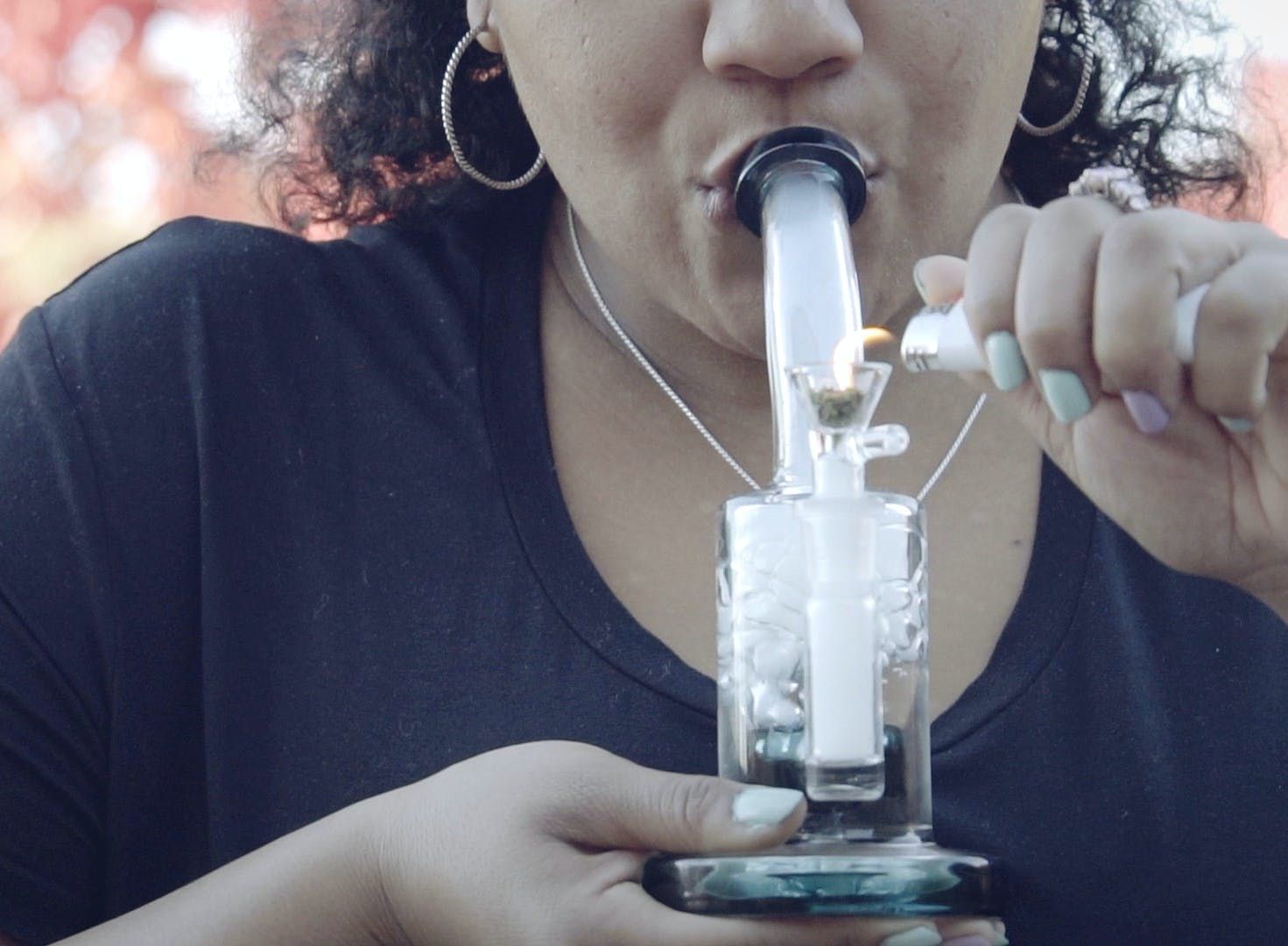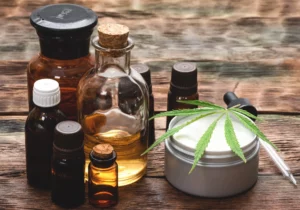At this point, we’ve covered the reasons why patients smoke joints, along with why some folks avoid smoking entirely. In this article, part of a series for folks new to cannabis, we’ll focus on the other methods used to smoke cannabis, specifically pipes and bongs. While these methods also involve the inhalation of cannabis smoke, they can differ quite a bit in terms of their effects and how patients respond when using them.
FOLLOW US ON FACEBOOK & INSTAGRAM
How to Smoke Cannabis With a Pipe
Smoking from a pipe is one of the most common ways to consume cannabis, and it’s a method that’s used by many. For those who aren’t familiar with this method of consumption, pipes are a smoking device usually made from glass, wood or metal. Most pipes consist of a bowl, where ground marijuana is burned, that’s connected to a neck through which patients inhale the cannabis. Many pipes also have a small hole called a carb that sits on the side of the bowl and helps control airflow through the pipe. To use the carb properly, hold your thumb over the carb while inhaling and then let it go when your inhalation is over.
Reasons Patients Use Pipes to Smoke Marijuana
For some cannabis users, pipes are the preferred way to take their medicine. But why choose a pipe over other methods? For some, it comes down to time and convenience—rather than having to go through the sometimes lengthy process of rolling a joint, all you have to do with a pipe is:
- take a pinch of flower.
- grind it either by breaking it up with your hands or using a grinder.
- pack it in your pipe—not too densely at the bottom to allow easy inhalation
- light up the flower and smoke it.
For patients who need to get in a quick dose here or there, a pipe can be a much easier solution.
Another common reason for using a pipe is having heightened control over the amount being smoked and the size of the inhalation. Some find a single joint makes for an overly hefty dose to have in one sitting—and they don’t like smoking their joint a little bit at a time. With pipes, you can take as small or large a dose as you need, and can even choose your pipe based on your preferences.
If you like to take very small doses, look for a little pipe with a small bowl and thin neck. This will reduce the amount of smoke you inhale at any given time. On the other hand, those who prefer larger doses can find larger pipes with big bowls and wide necks. These will allow for much larger inhalations.
A final consideration is around preferences for the type of effect that pipes offer. As with other methods, even slight differences in how cannabis is consumed can alter the way it affects the user. The only way to know how this method will affect you is to try smoking cannabis with a pipe.
RELATED: MARIJUANA & YOUR LUNGS: SHOULD YOU BE WORRIED?
How to Smoke Cannabis With a Bong
Bongs are another popular device used to smoke cannabis, and while they share some similarities with pipes, they also have some big differences. For instance, a bong is often larger than a pipe (although there are tiny bongs and large pipes that might not fit this general rule); it’s usually placed on a table during use, rather than held in your hand.
A bong, which is often shaped like a vase—larger at the bottom with a long neck to inhale through, gets filled with water. That water acts to cool and filter the smoke. The bowl where the cannabis is burned sticks out of the bong’s base. Patients using bongs can light the medicine in the bowl while inhaling through the top of the bong. This action pulls smoke into the bong, where it collects until the patient is ready to inhale the full dose. When they’re ready to inhale, all they have to do is pull the bowl out of the bong and inhale through the neck. This clears the rest of the smoke at once, giving the patient a large dose of cannabis.
Reasons Patients Use Bongs to Smoke Marijuana
Bongs make it possible to consume large doses of cannabis in one go. While many patients don’t need such large doses to treat their symptoms or conditions, some folks can only find relief in this way. I’ve worked with PTSD patients, for example, who report that bongs are the only way they’re able to manage overwhelming thoughts about their traumatic experiences. Without cannabis, they might sit for hours staring into space, trapped in a traumatic memory. But if they take a large dose of cannabis through a bong, they say they’re able to snap themselves out of the flashback and carry on with their day.
Patients with chronic pain also tend to need larger doses of cannabis, sometimes due to the severity of their symptoms and other times due to the slow increase in tolerance that can come from using cannabis over time. For many, a bong can be the simplest and most efficient way to take a large dose quickly.
Another reason patients use bongs is because they allow you to cool and filter the smoke with the water that’s added to the device. Hot smoke is no friend to the lungs, so cooling it down can be helpful in reducing the irritation that might arise.
Patients looking to use the water in bongs as a filter for harmful elements should know that the research isn’t all favorable. While water can filter certain noxious elements from the smoke, it can also reduce the THC content being ingested. Some studies have shown that water can produce 30% more carcinogenic tar per cannabinoids than an unfiltered joint.
So, if you’re looking for an extremely potent level of cannabinoids or a lower concentration of tar, you may be better off hitting your bong without the water. On the other hand, if you want to reduce the irritation caused by the heat, by all means add water.
If you think a bong may be a good option for you, but haven’t used one before, check out our how-to video:
In the next installment of the Cannabis for Newbies guide, we’ll talk about cannabis concentrates and the many ways to use them. Need a medical marijuana recommendation? Consult with one of HelloMD’s knowledgeable doctors; it’s 100% online, private and easy.






